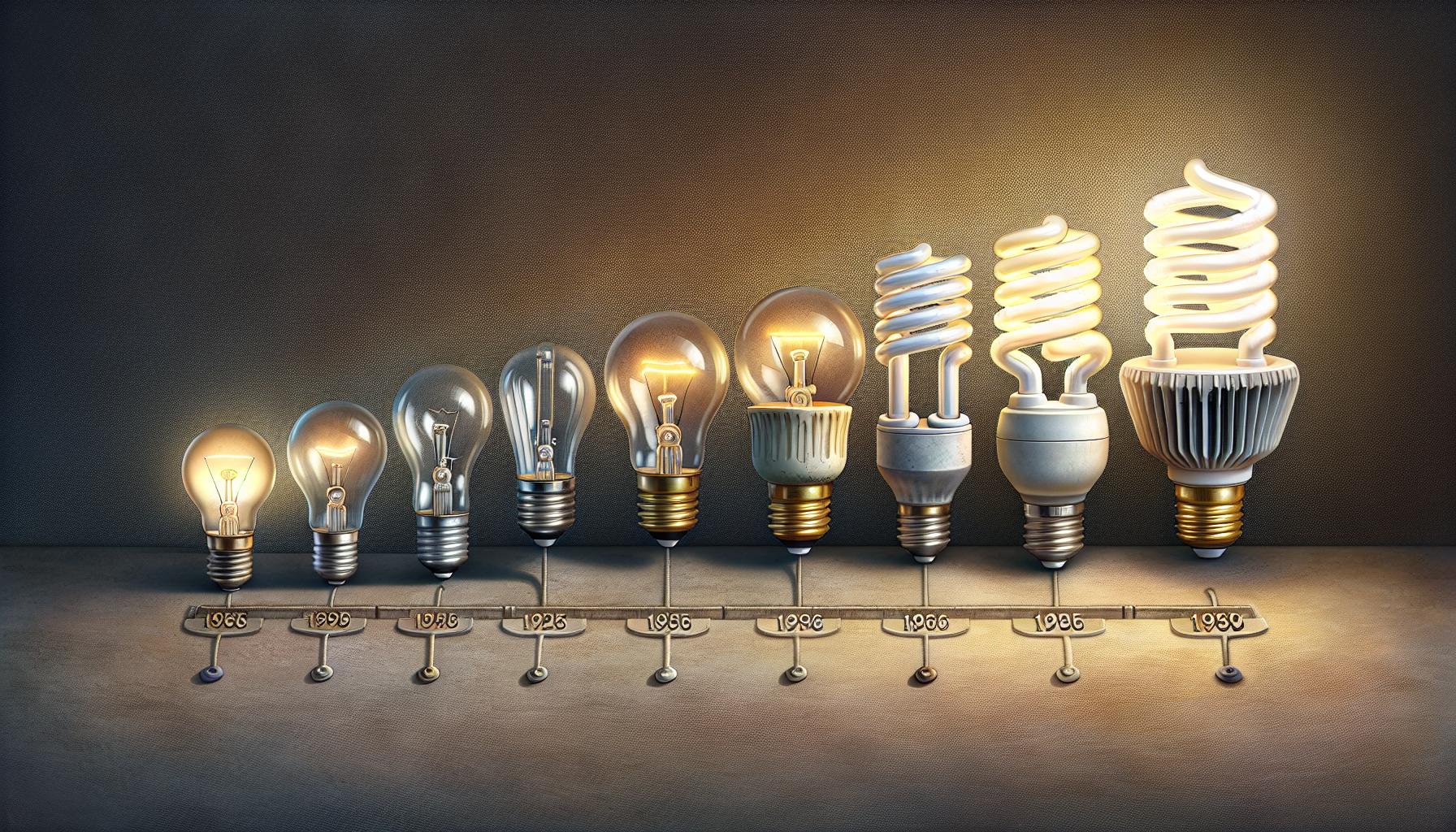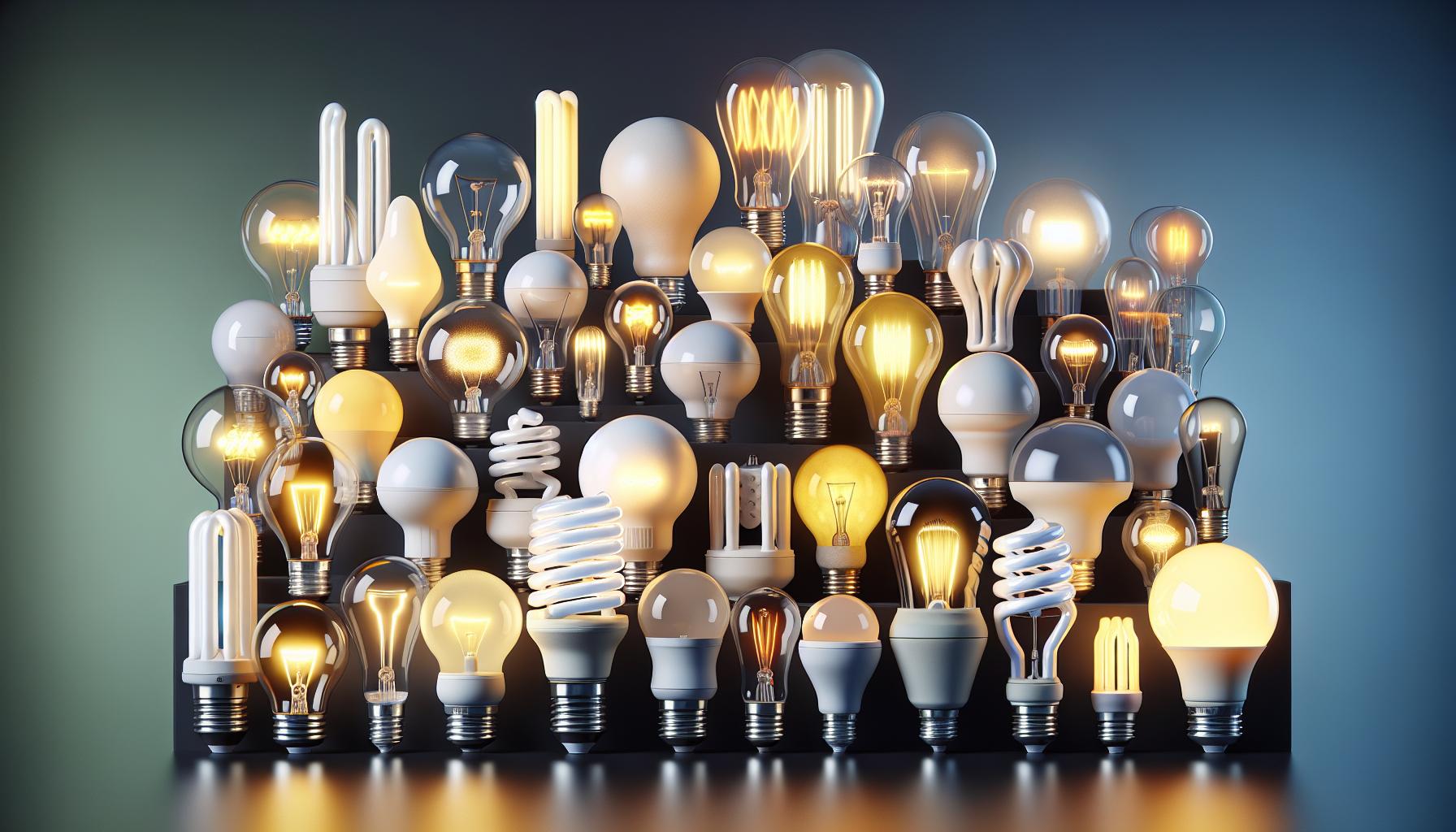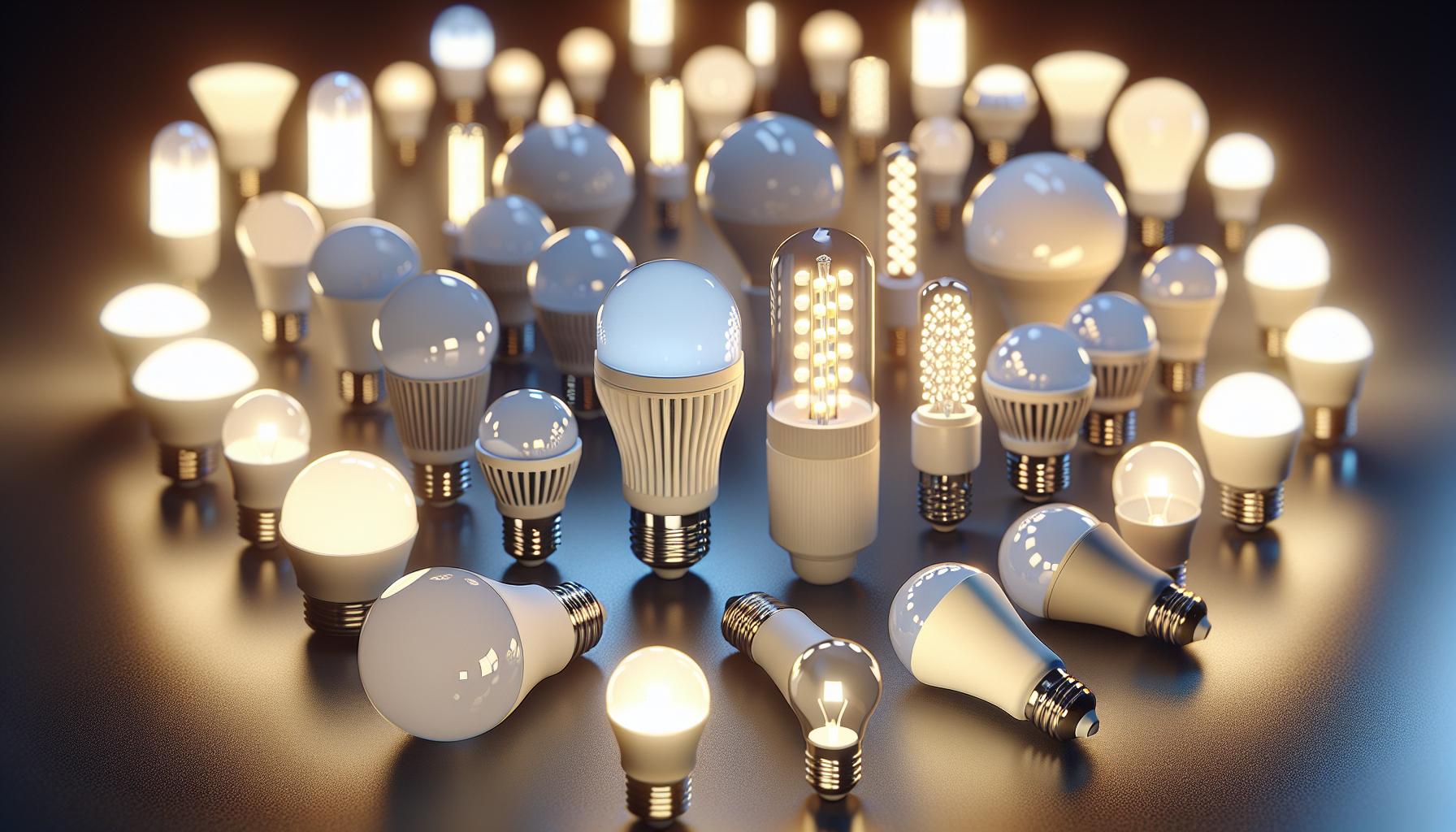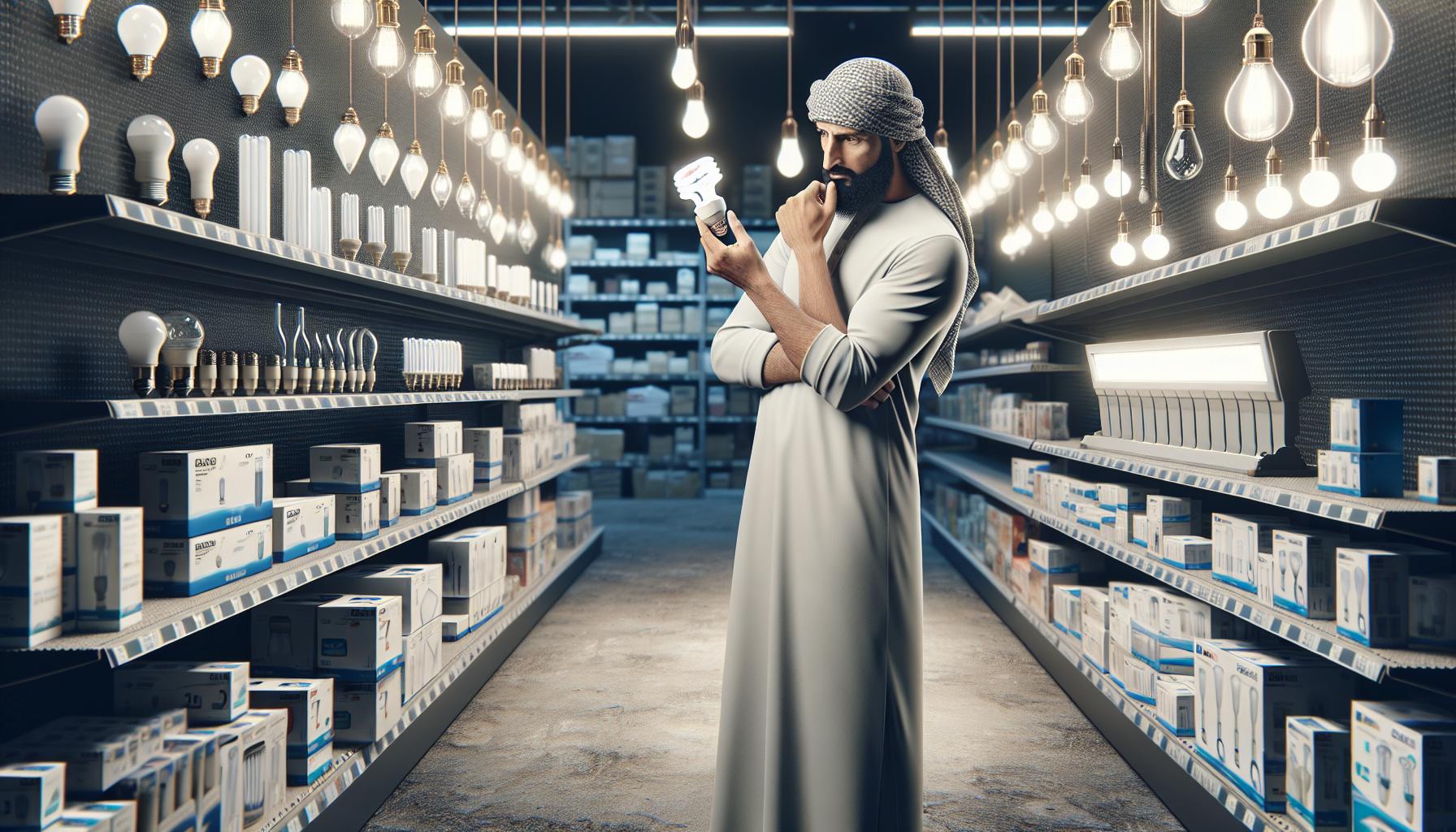Ever stood in the light bulb aisle feeling overwhelmed by the choices? You’re not alone. Picking out a light bulb used to be as simple as grabbing a 60-watt incandescent off the shelf, but those days are long gone. Now, you’re faced with a dizzying array of options, each boasting different technologies, shapes, and features.
From lumens to wattage, CFLs to LEDs, and the perplexing color temperature scale, it’s no wonder you find yourself scratching your head. The world of light bulbs has expanded, and with it, the complexity of making the right choice. Let’s shed some light on why picking the perfect bulb feels like you need a degree in illumination engineering.
Understanding Light Bulbs
Venturing into the world of bulbs can feel like stepping into a maze of specs and terms. First up, let’s crack the code on lumens and wattage—two terms that often trip up even savvy shoppers. Lumens measure the amount of light a bulb emits; the higher the lumens, the brighter the bulb. Wattage, on the other hand, reveals the energy a bulb uses. It’s a common misconception to shop for brightness based on watts— a holdover from incandescent days. Lumens are your true beacon for brightness nowadays.
Here’s a quick reference you can use:
| Lumens | Incandescent (Watts) | LED (Watts) |
|---|---|---|
| 800 | 60 | 8-12 |
| 1600 | 100 | 14-17 |
| 2400 | 150 | 22-25 |
Next to lumens and watts, you’ve got the color temperature of the light, measured in Kelvin (K). Think of color temperature as the hue of the light ranging from warm yellow (lower K) to cool blue (higher K). Here’s the twist—how a room feels can heavily depend on this subtle glow.
- Soft white (2700K–3000K) is cozy and warm, great for bedrooms and living areas.
- Bright white (3500K–4100K) is more neutral and superb for kitchens and workspaces.
- Daylight (5000K–6500K) is crisp and vibrant, ideal for reading nooks or craft areas.
On to tech—CFLs (Compact Fluorescent Lamps) and LEDs (Light Emitting Diodes) are where the energy-saving action’s at. While CFLs are cheaper upfront and use about a quarter of the energy of incandescents, they have a slower start-up and contain mercury. LEDs, albeit more expensive to purchase, toss those cons to the wayside with instant-on features, lacking harmful substances, and a noteworthy lifespan.
The Evolution of Light Bulbs
As you dive into the world of light bulbs, understanding their evolution is like peering into a timeline of human innovation. Before LEDs and CFLs became household staples, the humble incandescent bulb lit up our lives. Invented by Thomas Edison in the late 19th century, it was a game-changer, but it wasn’t long before it became evident that these bulbs weren’t energy efficient.
Moving into the 20th century, the quest for efficiency and longevity in lighting brought forth halogen bulbs, offering a crisper light and improved energy saving compared to their incandescent predecessors. Though better, they still weren’t ideal from an energy conservation standpoint.
However, the real leap forward came with the introduction of Compact Fluorescent Lamps (CFLs). In the late 20th century, these spiral-shaped bulbs began adorning homes, slashing energy use by about 70% over incandescent bulbs. The CFLs’ increased lifespan also meant fewer replacements, a boon for both your wallet and the environment.
And then came the crowning jewel of lighting evolution: Light Emitting Diodes (LEDs). These bulbs represented a quantum leap in efficiency, boasting energy savings of up to 80% over incandescents and lifespans that could stretch up to two decades! LEDs also introduced unprecedented versatility with dimmable options and a spectrum of color temperatures, from warm yellows to cool blues.
| Comparison | Incandescent | Halogen | CFL | LED |
|---|---|---|---|---|
| Energy Savings Over Incandescent | – | Moderate | Up to 70% | Up to 80% |
| Lifespan | Short | Moderate | Long | Very Long |
| Color Temperature Options | Limited | Limited | Varied | Extensive |
Throughout this transformation, there’s been a constant push towards finding that sweet spot where efficiency meets practicality. It’s been a fascinating journey from the simple glowing filament to complex electronic circuitry, all in pursuit of the perfect bulb for your home DIY projects and lighting needs. With each advancement, lighting has become more user-friendly, longer-lasting, and easier on the planet. So next time you’re stuck choosing the ideal bulb, remember you’re not just picking a source of light; you’re choosing a piece of history.
The Confusing Language of Light Bulbs
You’d think buying a light bulb would be straightforward – but the terminology alone can be baffling! Lumens, wattage, and color temperature are terms you’ve already encountered, but there’s a lot more jargon where that came from. Let’s break it down further.
« How Do Light Bulbs Produce CO2? Uncover the Shocking Truth
What Light Bulbs Have a Yellow Tint? Unlock Warmth in Your Home »
For starters, you may come across CRI, or Color Rendering Index. This is a measure of how accurate colors appear under the light of a bulb, compared to natural daylight. The higher the CRI value (which can go up to 100), the more vibrant and true your reds, blues, and greens will look.
Then there’s Kelvin scale, a specification for color temperature on packaging – this defines whether the light is warm, cool, or neutral. Warm light typically falls under 2700-3000K and gives off a cozy, yellowish glow. Cool light is over 4000K and has a more blueish tinge, akin to daylight.
Here’s a quick overview of the compatibility of base types you might wrestle with:
- Medium – The standard base for most household bulbs.
- Candelabra – Smaller bases commonly found in chandeliers and decorative lamps.
- Pin base – Usually associated with plug-in CFLs and certain LED lights.
When shopping, you may also wonder about beam angle, which is crucial for spotlights and floodlights. That number tells you how wide the light spreads. A narrow beam angle can spotlight a painting, while a wide one can illuminate an entire room.
Choosing the right light bulb means matching all these details to your needs and preferences. Remember, there’s no one-size-fits-all solution. Your DIY project or home lighting upgrade requires consideration of each factor to achieve the atmosphere and energy efficiency you’re aiming for. Keep these terms in mind and you’ll navigate the light bulb aisle like a pro.
Wattage vs. Lumens: Deciphering Brightness
You’ve probably found yourself staring at a wall of light bulbs, scratching your head at wattage and lumens, wondering which is the true indicator of brightness. It’s crucial to know that wattage measures energy consumption while lumens measure light output.
Traditionally, you might have equated higher wattage with brighter light. That was true for incandescent bulbs, where a 60-watt bulb was dimmer than a 100-watt bulb. But with modern LEDs and CFLs, this logic doesn’t hold water.
Here’s why: advances in technology mean that LEDs can produce the same amount of light as incandescents while consuming significantly less power. That’s where lumens come in—lumens actually tell you how bright a bulb is, regardless of the energy used.
Consider this example:
| Bulb Type | Wattage (W) | Brightness (Lumens) |
|---|---|---|
| Incandescent | 60W | 800 lm |
| LED | 10W | 800 lm |
Both bulbs provide the same brightness, but the LED uses a fraction of the energy. Gone are the days when higher wattage meant more light.
It’s time to shift focus to lumens when evaluating brightness. A handy tip for replacement: look for lumens that are close to the light output of the incandescents you’re used to. For most household purposes, bulbs ranging from 800 to 1100 lumens will suffice.
When you’re next in the light bulb aisle, remember that lumens are your go-to for brightness, not wattage. By understanding this, you’ll make more energy-efficient choices without sacrificing the light quality you desire.
And don’t forget the color temperature. Pair your lumens knowledge with an understanding of whether you need a warm light (approx. 2700K) or a cool light (above 5000K) to create the perfect ambiance for your home. Keep in mind that the higher the Kelvin number, the cooler and bluer the light.
The Battle between CFLs and LEDs
You’re standing in the lighting aisle of your hardware store, faced with a choice: Compact Fluorescent Lamps (CFLs) or Light-Emitting Diodes (LEDs). The battle for bulb supremacy is a quiet one, but as a DIY and lighting enthusiast, you’re right at the heart of it. Here’s what you need to know to make an informed choice.
First, let’s talk lifespan. LEDs boast long lives, with some lasting up to 25,000 hours or more. On the other hand, CFLs can offer about 8,000 to 15,000 hours. That’s not shabby, but LEDs win in endurance. They are literally the lights that keep on giving, staying bright long after CFLs have dimmed for good.
Energy efficiency is another battlefield. Although both CFLs and LEDs are energy-saving alternatives to incandescent bulbs, LEDs have an edge. To give you a rough idea, here’s a comparison based on average usage of 10,000 hours:
| Light Bulb Type | Energy Used (Watts) |
|---|---|
| Incandescent | 600 |
| CFL | 140 |
| LED | 100 |
You’ll notice LEDs consume less energy, which means more savings on your energy bills.
Onto the upfront cost. You’ll usually pay more for LEDs than for CFLs. But don’t let the price tag deter you. Because LEDs last longer and sip less electricity over time, you’re looking at long-term savings that often justify the initial investment.
Finally, there’s the instant-on factor. LEDs light up at full brightness the moment you flip the switch, while CFLs often take a moment to warm up to their full potential. For those of you who prefer instantaneous light, LEDs are the way to go.
Remember, choosing between CFLs and LEDs is not just a matter of personal preference but also how the characteristics of each align with the needs of your space. Whether it’s the workbench in your garage, the reading nook in your living room, or the ambient lighting in your bedroom, the right bulb can make all the difference.
Demystifying the Color Temperature Scale
Have you ever noticed how some rooms feel cozy and inviting, while others strike a more clinical or harsh tone? That’s often down to the color temperature of the light bulbs used. Color temperature is measured in Kelvins (K), and this scale can greatly influence the mood and functionality of your space.
Here’s what you need to know:
- Lower Kelvin numbers mean the light is warmer and has a more yellow or orange tone, akin to the glow of a sunset.
- As the Kelvin number increases, the light becomes cooler, emitting bluer, daylight-like color.
For a touch of warmth, ideal for living rooms or bedrooms where you want to relax and unwind, look for bulbs in the 2700K to 3000K range. Want to mimic natural daylight, especially beneficial in spaces like home offices or kitchens where tasks require focus? Aim for bulbs within 3500K to 5000K.
Here’s a quick reference table to guide you:
| Kelvin Range | Color Temperature | Ideal for |
|---|---|---|
| 2700K – 3000K | Warm White | Living rooms, bedrooms |
| 3100K – 3500K | Cool White | Bathrooms, hallways |
| 3500K – 5000K | Daylight | Kitchens, home offices |
A real game-changer for your DIY home projects is bulbs with adjustable color temperature. Some of today’s smart bulbs let you shift from warm to cool light with just a tap on your phone or a voice command, setting the perfect ambiance for any occasion.
Keep in mind that the color temperature doesn’t affect the brightness, but it does contribute to the perception of light in a room. It’s a subtle art—choosing the right temperature can enhance colors in your room, influence your mood, and even affect how you perceive the size of a space. So before you swipe the first box off the shelf, take a second to envision the atmosphere you’re aiming for. That way, you’ll nail the look and feel of your space every single time.
Conclusion
Navigating the world of light bulbs doesn’t have to leave you in the dark. Remember, it’s all about lumens for brightness and color temperature for mood. With these tips tucked away, you’ll find the perfect glow for every corner of your home. Whether you’re setting up a cozy reading nook or a vibrant kitchen, the right lighting is just a choice away. Now that you’re equipped with this knowledge, you’re ready to shine a light on your space exactly the way you want it. Happy illuminating!
Frequently Asked Questions
What does wattage measure in light bulbs?
Wattage measures the energy consumption of a light bulb, not its brightness. It indicates how much electricity the bulb uses.
Why doesn’t higher wattage mean brighter light with LEDs and CFLs?
Unlike incandescent bulbs, LEDs and CFLs have different technology that allows them to produce more light output (lumens) with less wattage, making higher wattage a less relevant indicator of brightness.
Should I focus on lumens or wattage when choosing a light bulb?
You should focus on lumens when evaluating the brightness of a light bulb as it measures light output, while wattage indicates energy consumption.
How does color temperature affect the ambiance of a room?
Color temperature influences the mood and functionality of space by emulating different light settings ranging from warm (yellow/orange light) to cool (blue/white light), affecting the overall atmosphere.
What is the ideal color temperature range for different rooms?
The ideal color temperature range varies: bedrooms and living areas often benefit from warm light (2700K to 3000K), while task-oriented spaces like kitchens and offices may use cooler light (3500K to 5000K).
Can I use bulbs with adjustable color temperature for home projects?
Yes, using bulbs with adjustable color temperature allows you to customize the ambiance and is ideal for DIY home projects where flexibility is desired in lighting conditions.





